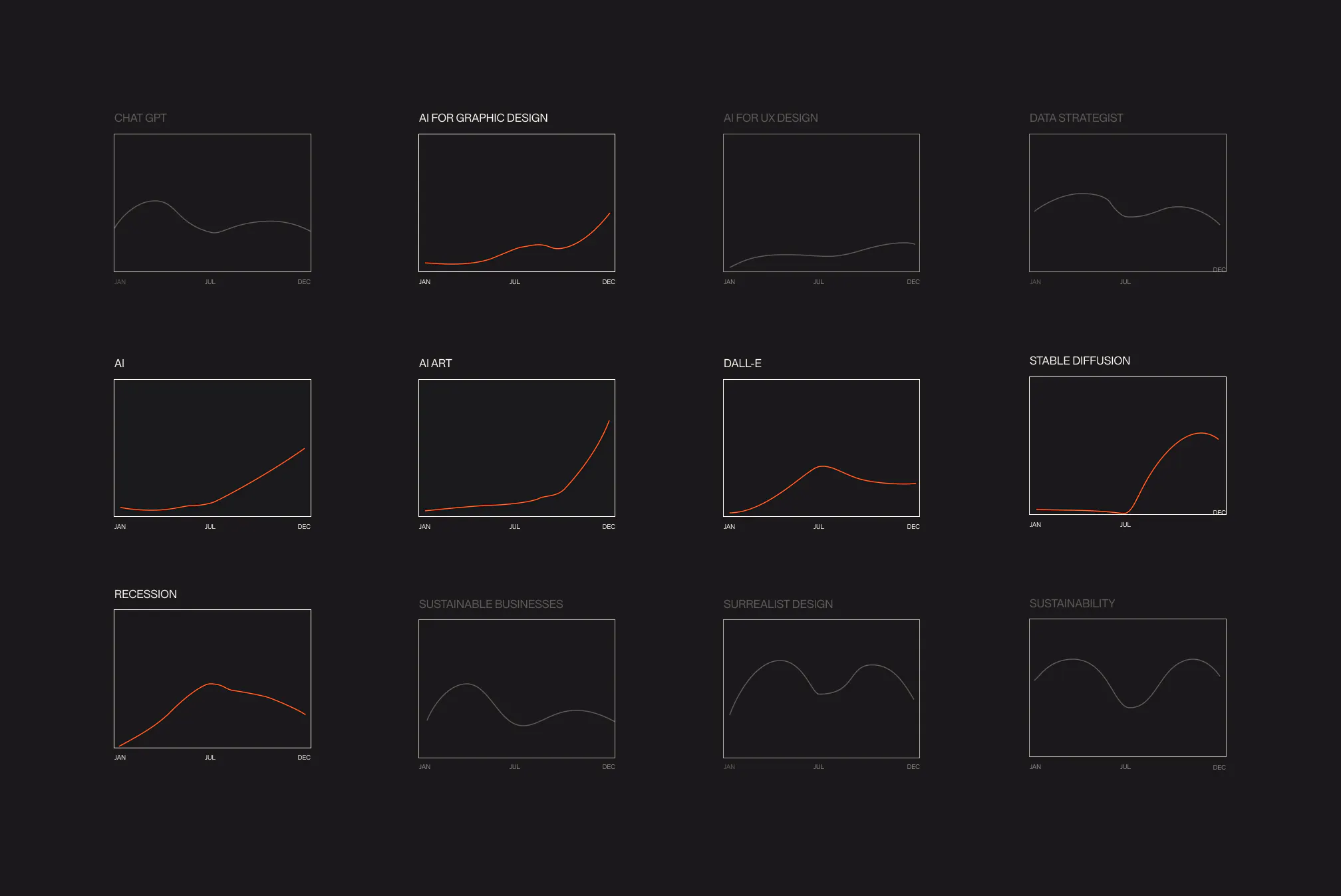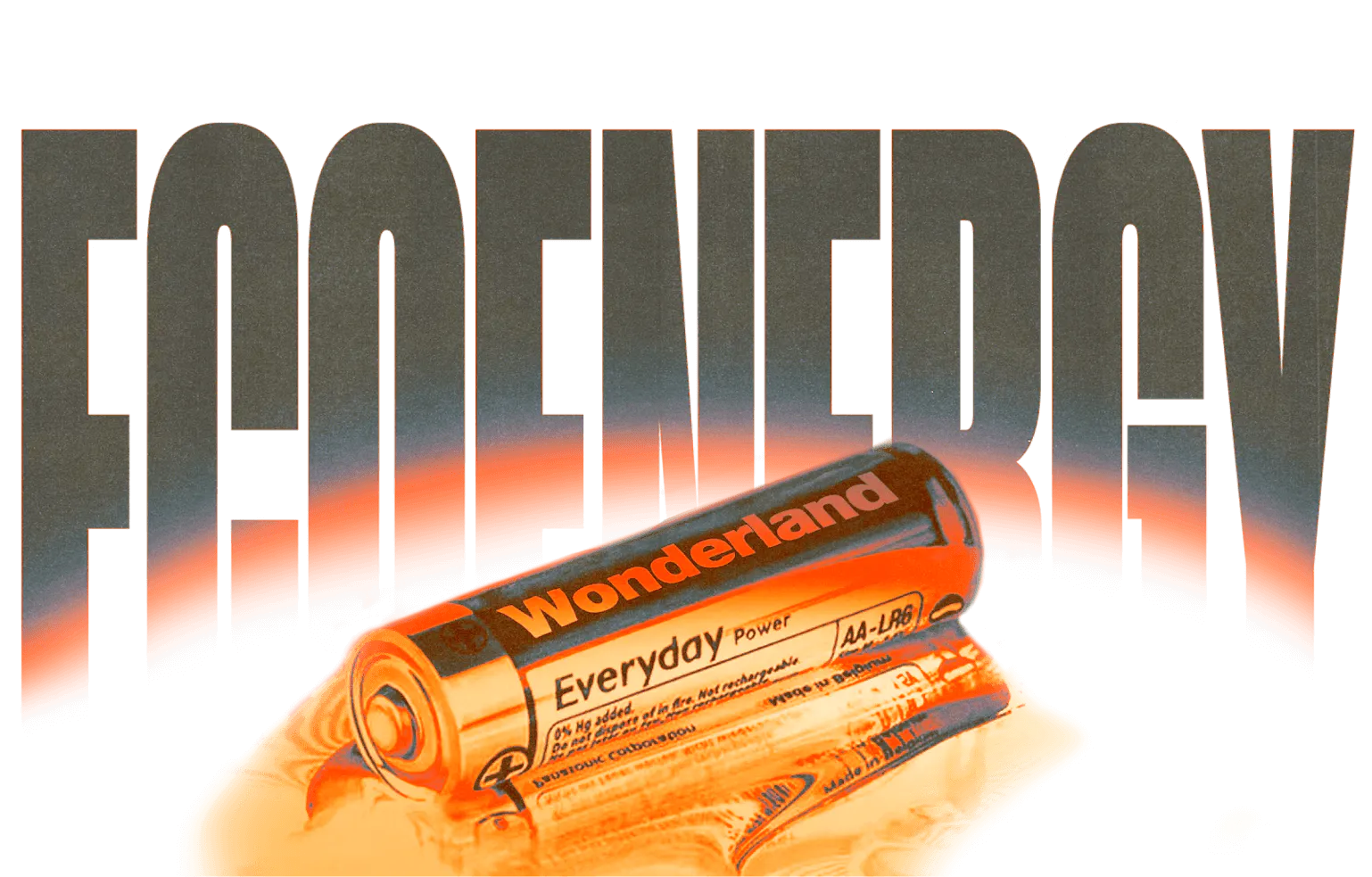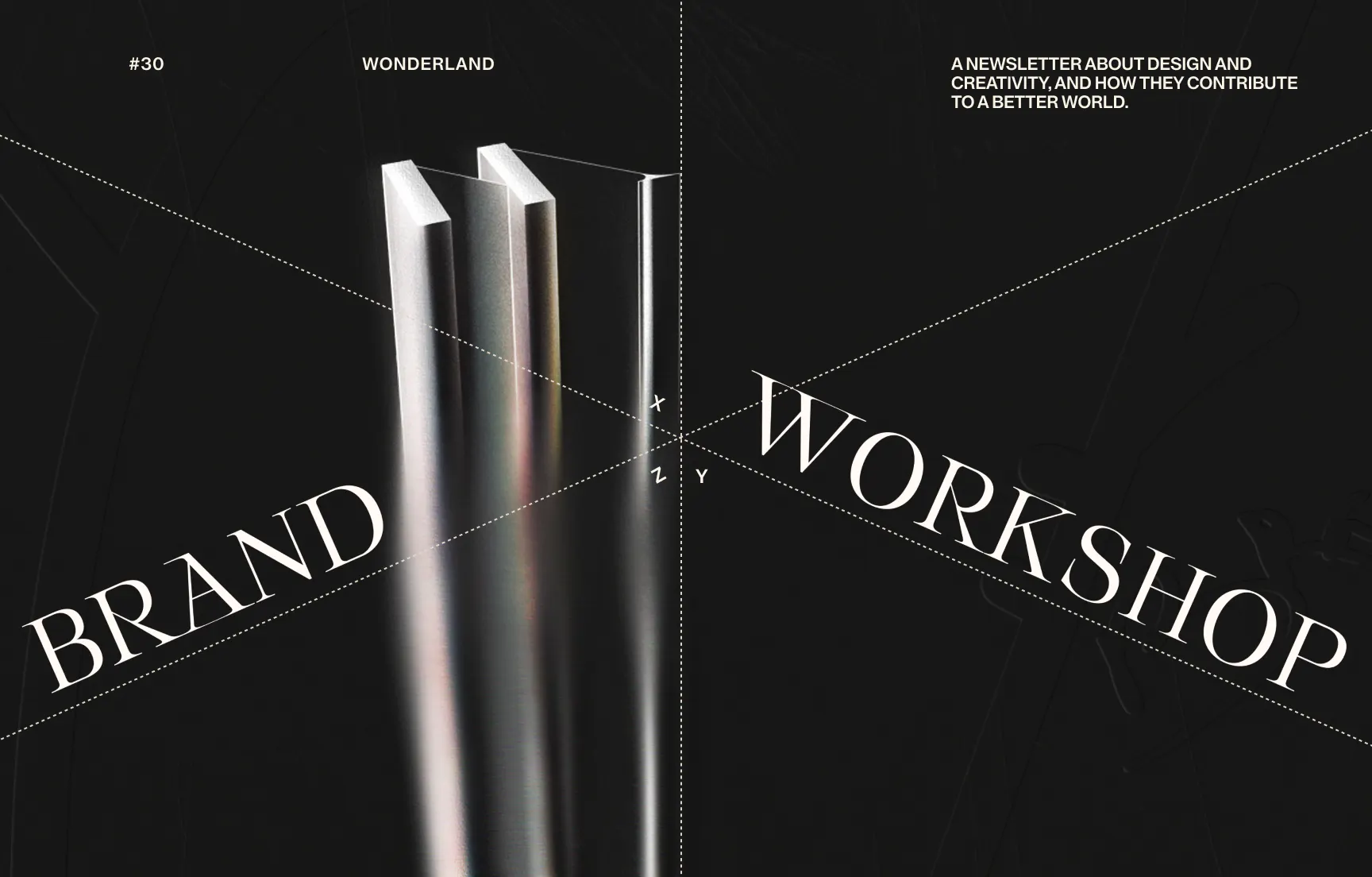
Our Perspective on the Evolving Landscape of Branding
Our Perspective on the Evolving Landscape of Branding
We asked our brightest minds for their insights and forecasts on how events in the new year will shape the world of branding.
Happy New Year, from our team to yours! 2022 was a year filled with geopolitical, economic, and social challenges that left us in awe. In this ever-changing world of ours, predicting the future has become a difficult task—if not impossible.
Even so, there's still great value in understanding our recent past and predicting the year ahead. So, we asked our brightest minds for their insights and forecasts on how the geopolitical climate, current events, social issues, new emerging technologies and climate change will shape branding and our work in the coming years.
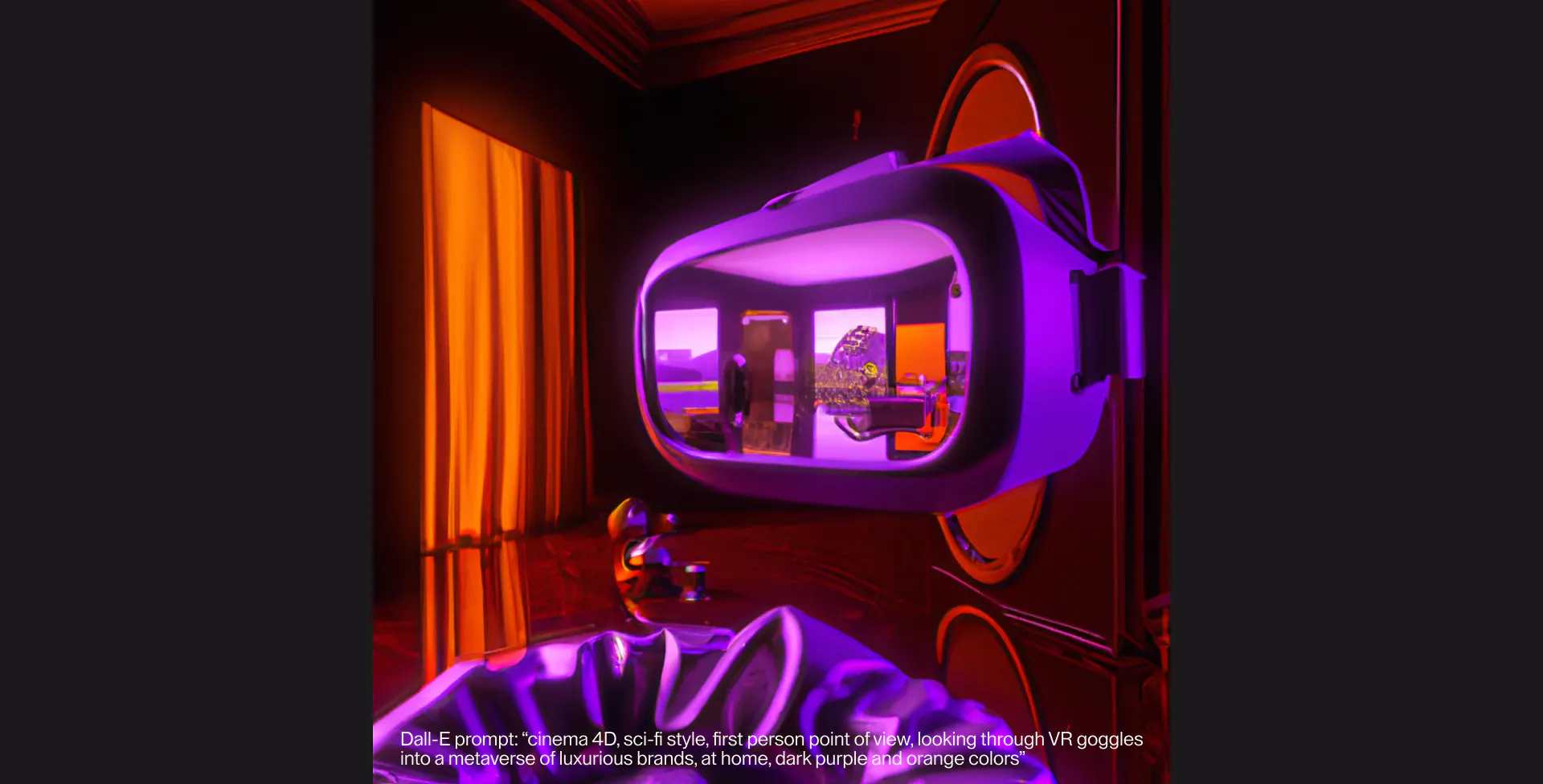
PART I: Predictions from our teams: design, strategy and data
1. Design Team
1.1 Standing on the shoulders of artificial giants
As advancements in AI continue to improve over the next year, AI will be able to take over much of the grunt work involved in design work. This will free up creatives to focus on the more high-level, holistic, and creative aspects of their job. Instead of viewing artificial intelligence as competition or a threat, creatives can approach it as a valuable team member that is always available and able to work at a rapid pace. That said, it’s important to note that the use of AI in design is still in its early stages and it is not yet clear exactly how it will be integrated into the design process. Some potential ways that AI could be used in design include:
Generating ideas or concepts for designers to work with
Automating certain tasks such as resizing graphics or selecting colours
Analysing data to inform design decisions
Creating custom design elements or templates
Creation copy captions for your UX/UI Designs
Providing real-time feedback and suggestions to designers
It’s possible that AI could one day be used to create entire designs without the need for human input, although this is not feasible with current technology. It’s not only important for designers to stay up to date with developments in AI and machine learning, but also continue to develop their own skills and creativity, as the human touch will always be an essential element of good design.
1.2 Less rigidity, more flexibility
As the world is changing at a faster pace than ever before, agile brands that move with it are more likely to survive. We will take a closer step towards embracing imperfection and experimentation in brand expression while less value will be put into keeping rigid consistency as the brand need to be able to dynamically fit different moulds and narratives defined by new technologies. Consistency will still be found within the brand’s core narrative and philosophy, but it’s time for experimental and fresh designs, initiatives, and campaigns.
1.3 Personalised experiences for every user
In the year 2023, it is likely that we will see a greater emphasis on a humane approach to design, as opposed to an emphasis on creating purely polished and perfect designs. With the increasing reliance on artificial intelligence in the design process, designers will have more freedom to focus on the creative aspects of their work. This will allow designers to take a more holistic approach to their work, considering not just the aesthetics of a design, but also the emotional impact it has on people. We expect this to manifest in web design through the use of personalisation and customisation; instead of designing for a general audience, designers will need to create websites that are tailored to the needs and preferences of individual users. This will involve utilising data and AI to create personalised recommendations based on user interests and behaviour.
1.4 Fantastical Worlds
The continuing development of the metaverse and largely web3.0 will bring a new territory for brands to discover. Digital presence has become an absolute must for brands and has enlarged the scope of branding for some time now, but with the metaverse, consumers will expect to engage with a brand in new ways: inside a game, on open social media platforms, XR and more. In the style of a "meta" experience that relies on connected worlds, brands will also begin to use data from the metaverse to inform their other strategies and vice-versa. The physical and digital, the real and fantasy will collide, creating an ever more interesting playground for brands. As brand designers, this poses a novel opportunity and challenge: engaging story telling, surreal visuals, high-level entertainment, and immersive environments will be needed to emotionally connect and communicate with consumers.
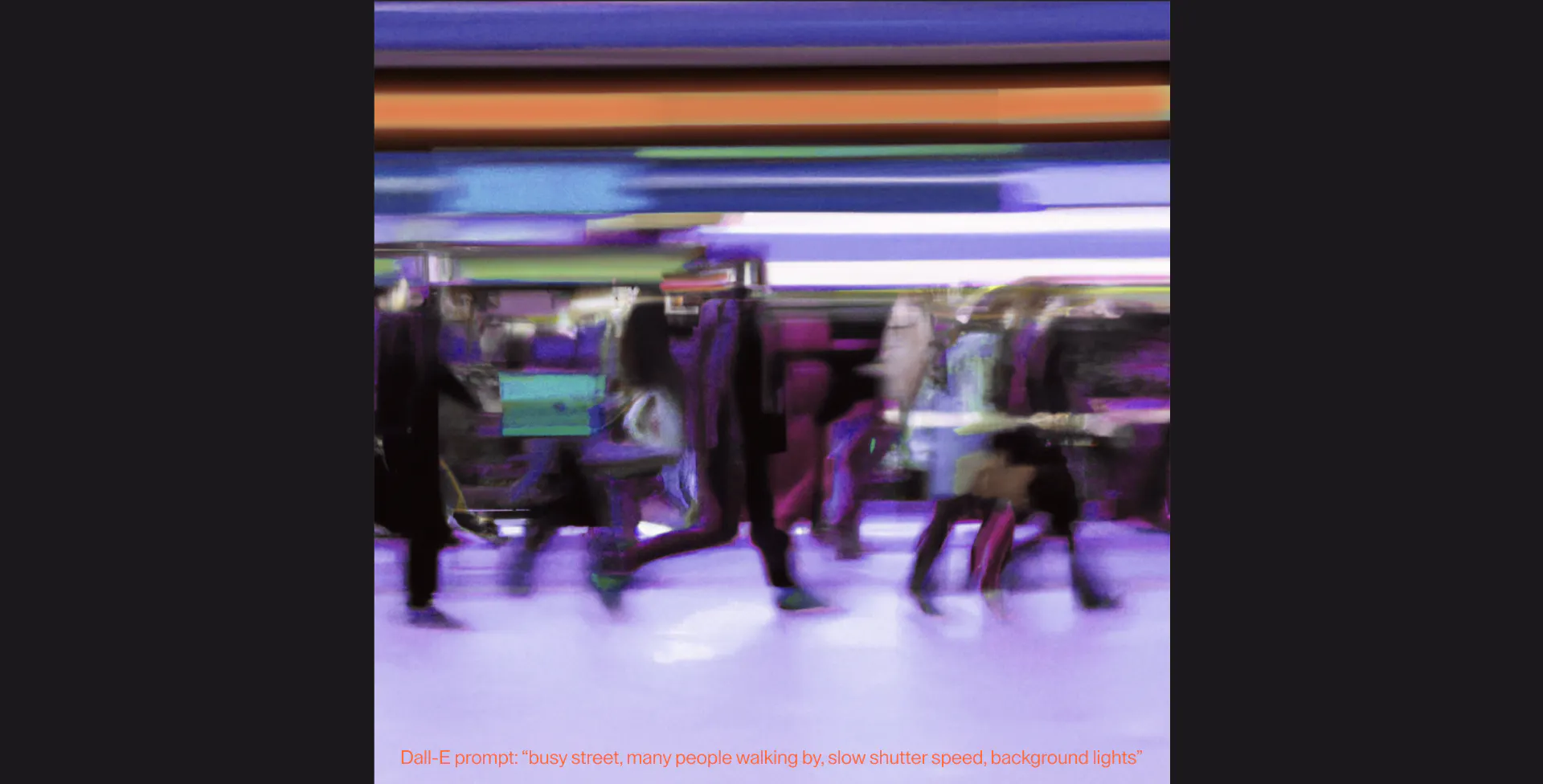
2. Brand Strategy Team
2.1 Agility in a fast-paced world
In today's rapidly changing world, it is essential for brands to possess agility and flexibility that allows them to adapt to evolving circumstances. Brands are becoming less specific as the future becomes increasingly unpredictable, and strategists must design within them the ability to react and avoid getting stuck in a specific niche. A key aspect of a successful brand will b the ability to adapt and respond to change.
2.2 A new team member
The use of AI within strategic day-to-day practices will only continue to increase in 2023. Utilising AI as a tool will allow strategists to gather and analyse customer behaviour, preferences, sentiments, and identify trends and patterns to better understand the market and inform brand strategy. AI could also be used to monitor and analyse social media and other online platforms to gather insights into customer attitudes and perceptions of a brand. Not only that, but in a recession, failure of a brand execution or campaign poses a higher risk to an agency or studio. With a continuing economic downturn and emergence of niche markets, data and AI will be sought-after components of the strategy team to improve the probability of a successful campaign or brand execution.
2.3 A silver lining in an economic downturn
The economic downturn is expected to continue into the upcoming year, providing brands with a chance to reinvent themselves in the face of challenging conditions. During a recession, customers often reassess their priorities, giving brands the opportunity to distinguish themselves from competitors and solidify their place in the market. By embracing the potential risks and adapting their branding to align with current cultural, technological, and societal trends, a brand can emerge from the recession even stronger than before.
2.4 More sustainable players
Already in this year, we’ve seen a few of our clients ask the possibility of a sustainable website. We’ve also seen a lot of our design agency peers obtain b-corp status, an indication that the wider creative community is starting to take a step towards considering the carbon footprint of creative work and offering clients more environmentally-conscious options. In the coming year, we expect to see more and more clients hop on the bandwagon to incorporate sustainable practices, either through branded outcomes such as a sustainable website/campaign, or a re-assessment of their brand strategy/purpose. As the sustainability market size is expected to reach 70.64 billion USD by 2030 (compared to 10.32 billion USD in 2020), we also expect there to be more innovation and new startups in this space that help the world decarbonise and make the energy transition easier and affordable for many consumers. This will result in a new category of clients, those who need original brand identities that correspond to their mission. This will present a fascinating opportunity for designers and strategists alike to try out new ideas.
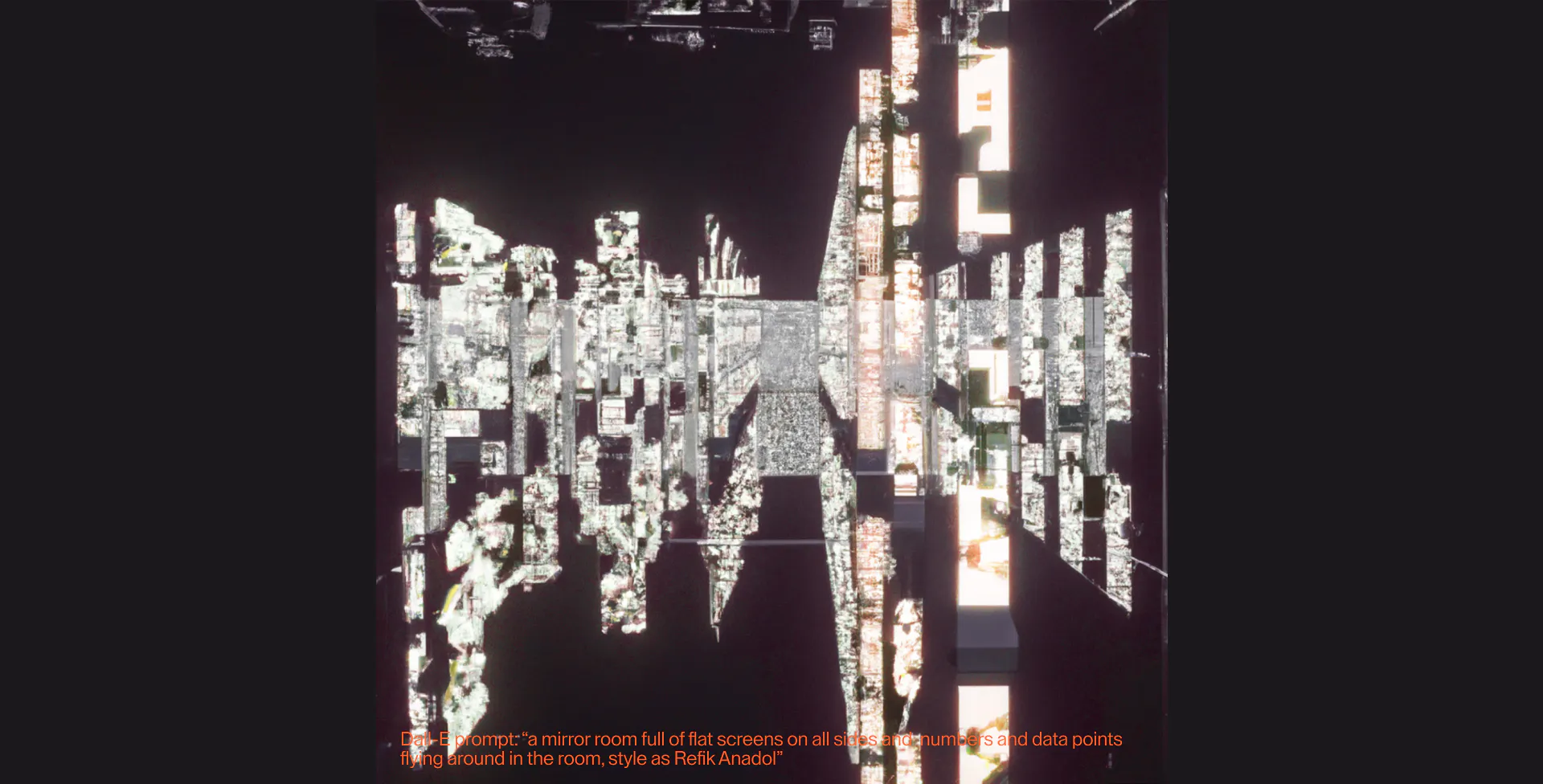
3. Data Team
3.1 A data strategist in every corner
There will be an influx of data strategists in European branding and marketing agencies — and if we look to our American equivalents, this influx is already happening. The data strategist position (also called data translator, analytics strategist, social strategist and a number of others) are people who “answer business questions with data” by using an amalgamation of data sources and applying a broad understanding of statistics and research techniques. This role has existed in corporations for decades (abet under a number of different titles) but has been slowly added to creative strategy teams in the past five years.
The data strategist position will continue to grow, and we will likely see a “data strategist” pop up in most strategy teams across creative branding and marketing agencies. Why? With increased competition, inflation, and a possible economic downturn, everyone is looking for a competitive edge to stand out and stay alive. The idea is that hiring someone who can “answer business questions with data” and (hypothetically) predict what an audience will engage with — might be the solution.
The caveat is that data may not solve all of our creative woes. The validity of your insights depends largely on the quality of your data sets, the research process you apply, and the ability to mitigate your biases as an analyst. You may be basing decisions on incorrect assumptions without structure to address these issues. Further, data is great when we want to know what already exists, but when it comes to creativity, the new and completely out-of-the-box untested idea may not always be supported by existing data. It would be a shame to see creatives restrict themselves to what current market data and trends would deem a success. A rigorous approach to the research processes but a flexible mindset on when applying data is appropriate in a creative context will be critical to the success of the role.
Part II: Predictions via Google Trends
Google Trends data allows us to see how popular certain search terms or topics are, based on how often people are searching them. We were curious to see how our predictions were trending over 2022 and which ones are (statistically) likely to continue to grow in search volume and interest in 2023.
